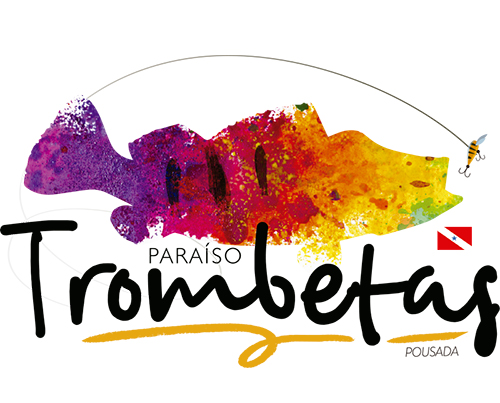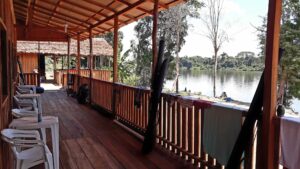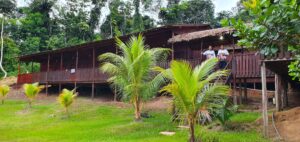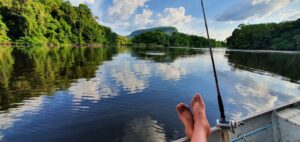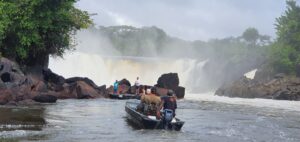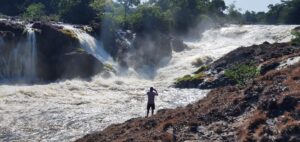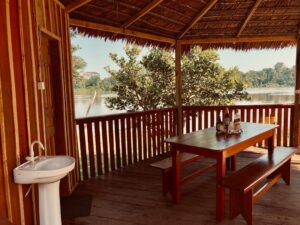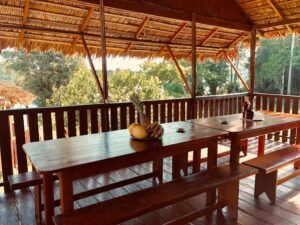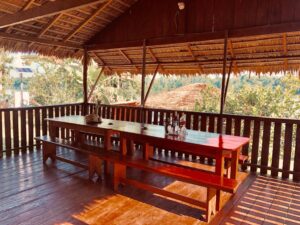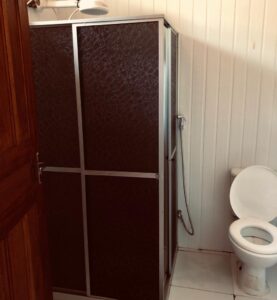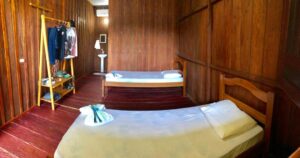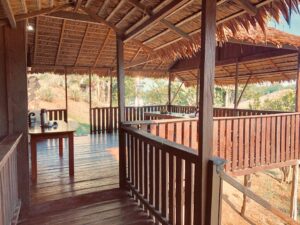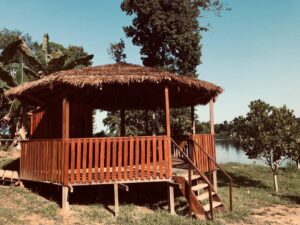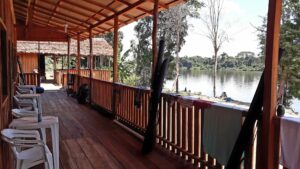Paraiso Trombetas Lodge
The Paraiso Trombetas Lodge is located near the maroon community of Cachoeira Porteira, municipality of Oriximiná, in the Pará State (1°00’00.3″S 57°02’15.4″W). This maroon community was formed two centuries ago by running slaves. This region presents the Amazon forest in its pristine form, with no evidence of devastation.
The exuberance of the green, the clarity of the waters, the diversity of fishes and birds, and the beauty of the numerous rapids and waterfalls of the Trombetas river will make every moment of your trip unforgettable.
In this paradise you will find a rustic, comfortable place, and you will return home with great memories. We are sure that your stay with us will make you often return with your family or friends.
Welcome to the Paraiso Trombetas Lodge.
The Trombetas River
This river of tepid waters has its source in Suriname, and after about 710 km, it meets the Amazon river near the city of Oriximiná. The waters are calm between the mouth of the Amazon River and the village of Cachoeira Porteira.
In this place there is a waterfall of about 3 to 4 meters that prevents navigation upstream. From this point, the river is radically transformed, presenting numerous rapids and waterfalls, many of them too high to be transposed.
One unique inhabitant of this region is the Tucunaré Porteiro (Cichla Thyrorus), present in the rocks existing throughout the bed of the Trombetas. The other fishes that are easily captured are Piraíba (Lau-Lau), Jau (Zungaro Jahu) , Pirarara (Redtail catfish), Trairão (Wolf fish), Jundiá (Leopard catfish), piranhas and bicudas (Boulengerella cuvieri), among others.
An incredible report including photos of the Trombetas River can be found in the book “Voyage Au Trombetas” by the French explorer Henri Coudreau. This researcher explored the Trombetas river and the region of Cachoeira Porteira between August 7 and November 25, 1899.
A copy of this historical book is available at http://archive.org/
The Peacock bass

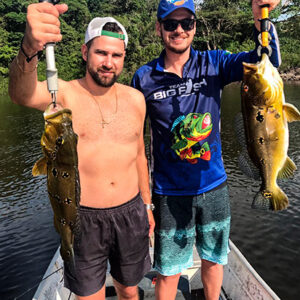
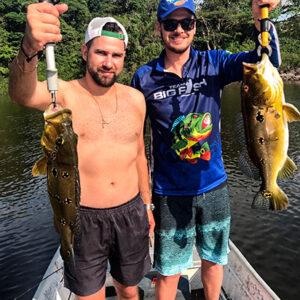
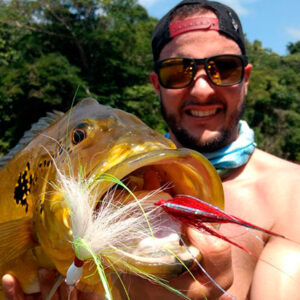
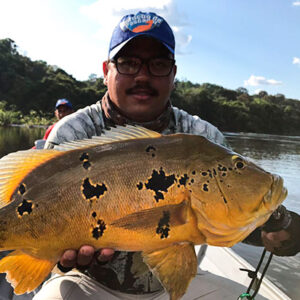
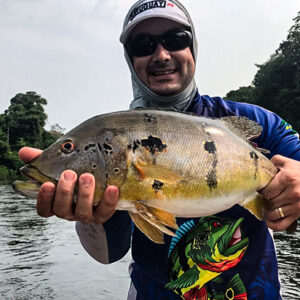



There are currently fifteen known species of tucunarés (Peacock bass), which are distinguished basically by the color pattern and morphological characteristics. Among these species, the Tucunaré Porteiro (Cichla thyrorus) has been described as the strongest species of this genus, certainly due to the fact that this fish is found amidst the rapids of the Trombetas river, in the region above Cachoeira Porteira. This new species was described by Kullander and Ferreira [Kullander, S.O. and E.J.G. Ferreira, 2006. A review of the South American cichlid genus Cichla, with descriptions of nine new species. Ichthyol. Explor. Freshwat. 17 (4): 289-398.].
There are several websites containing important information and curiosities about the tucunaré, and you are invited to visit the following pages:
The Porteira Waterfall
In the basin of the Trombetas river there are about 20 maroon communities, created by slaves who have fled more than two centuries of the cacao plantations. These communities virtually lived isolated from the rest of the country until exploratory studies for electric power generation began in the 1970s. The Cachoeira Porteira hydroelectric plant has even been included in a map of Brazil, as shown in the figure below. The original project intended a generation capacity of 2.350 MW, which would rank it among the ten largest hydroelectric plants in Brazil. Fortunately, the plans of this construction did not go ahead, allowing us to be here today to enjoy this unusual place. However, in 2014, the Ministry of Mines and Energy started the energy inventory of the region again.
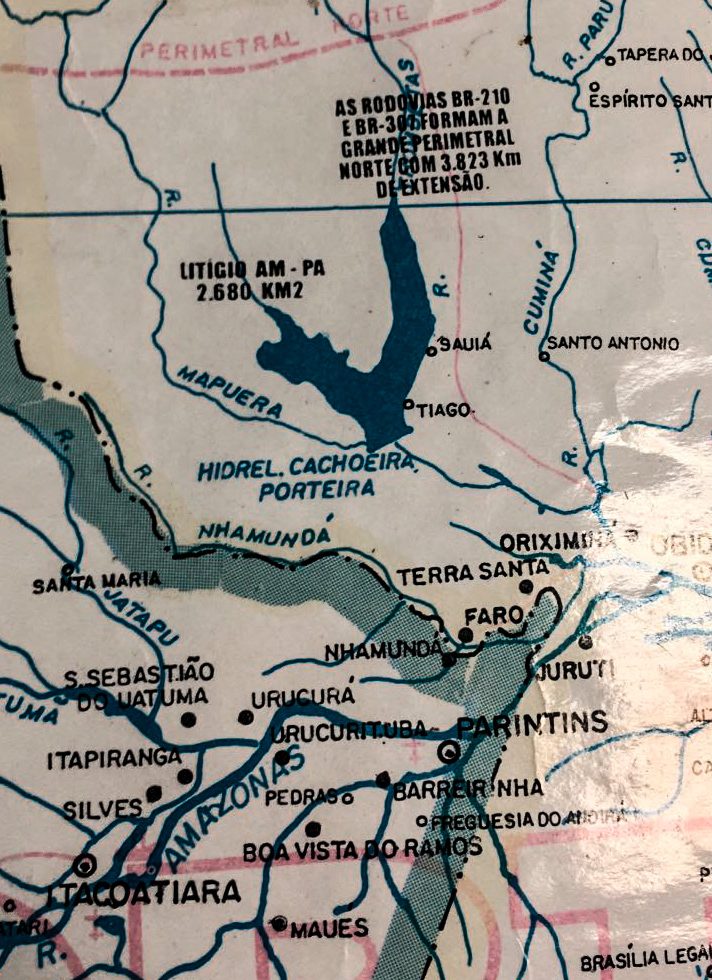
This region of the Trombetas has a population estimated at about 10,000 people, and covers several indigenous ethnic groups such as wai-wai, kaxuyana and tunayana. During the centuries of isolation, the maroon communities lived mainly from extractivism, especially from cacao and more recently from Para nuts. The existence of the Community of Cachoeira Porteira has been documented since 1778, with records of slaves in the cacao plantations in the lower Amazon region and of the Trombetas between 1823 and 1870.
Information about this region can be found at the following websites:
